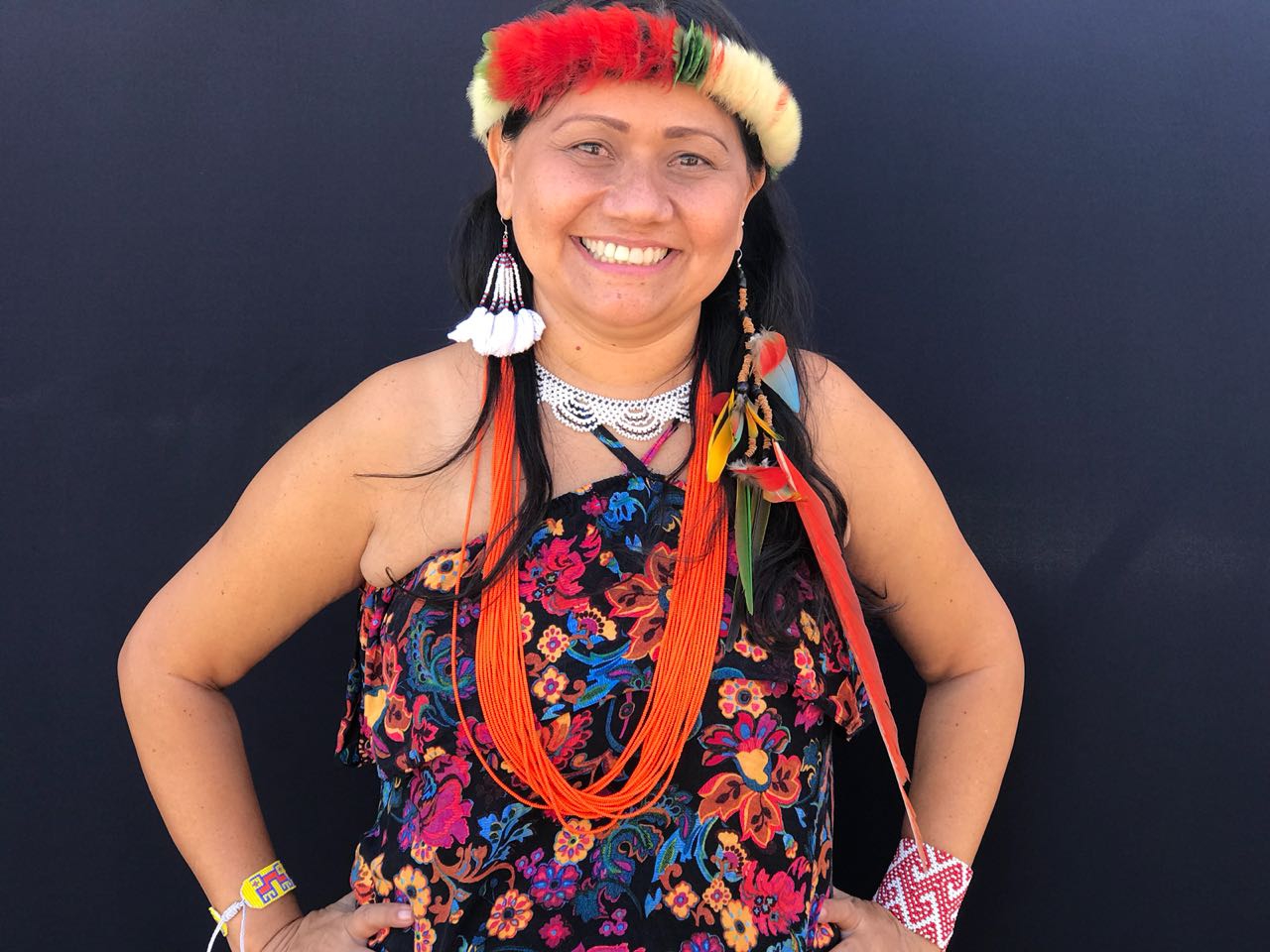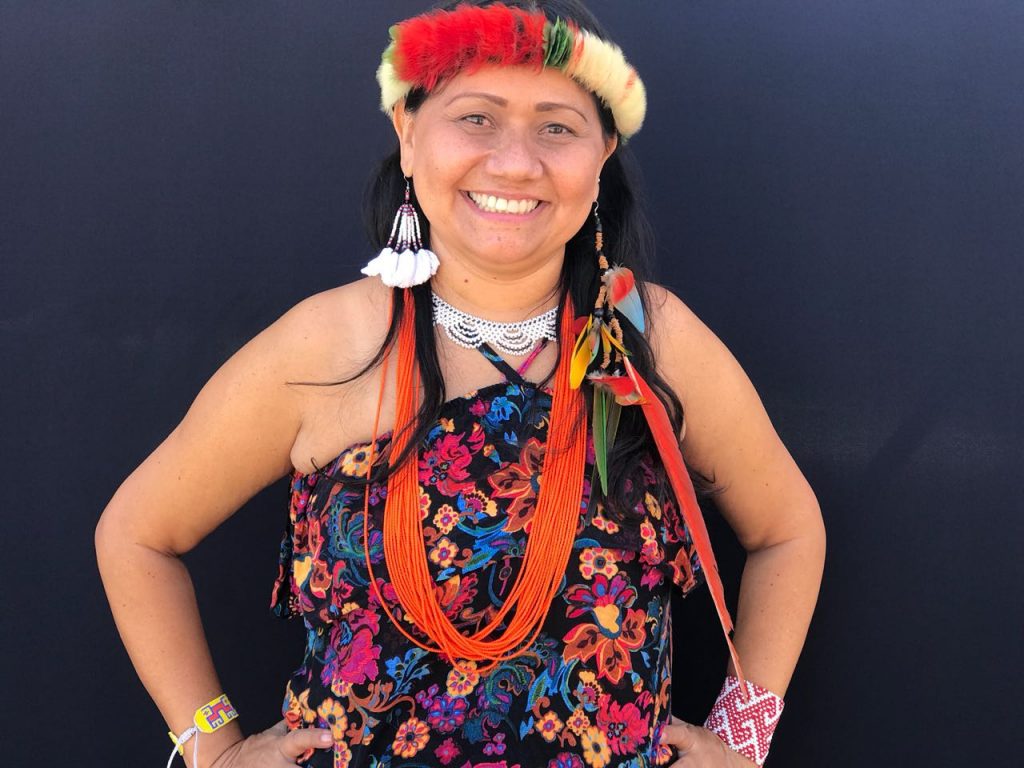
It’s a mistake to think that indigenous societies are monolithic, unchangeable. We assimilate behaviours like other cultures. We were doing this long before Europeans arrived. Adopting new customs does not mean turning our back on tradition.
Portuguese version below
The Portuguese don’t come to Brazil in caravelles or wearing clothes unsuited to the tropics as in the 16th century. But Christmas is still celebrated on the 25th of December, as then, as is eating farofa made from our manioc. Colonizers were also influenced by the colonized. We use cotton clothes and mobile phones but we still venerate our myths and ancestors and we live in permanent contact with nature. Our traditions are instruments, the tools or objects that define us as indigenous peoples.
Like most societies in the world, most indigenous nations are patriarchal. While at one time this arrangement was necessary, it is because it was part of various indigenous cultures. I’m Baré, but I know a Munduruku myth that spoke of a time when women were the leaders. Things don’t necessarily have to be like that. The most important thing is that individuals respect each other, that we recognize their qualities irrespective of gender or ethnicity. The world is interconnected and we know we’re going through a period of drastic change. We, the women of the world, we cannot allow ourselves the luxury of being mere spectators at such a critical time. Nor is today’s woman the same as 500 years ago. She knows she shares a new role in the world. And she’s not doing this just for show but because she knows it’s vital. The movement of native women is linked to the worldwide feminist movement. The choices we make will determine our future. We cannot turn our backs on experience and intuition. The Earth is our mother.
I’m the first woman to head COIAB (Coordenação das Organizações Indígenas da Amazônia Brasileira [coordination of indigenous organizations of Brazilian Amazonia]). Who would have imagined that a few years ago? Moreover who would have believed COIAB could have existed? This was made possible because we discovered that, though many differences separated us (“Indians are all the same” is another recurrent misunderstanding), within our diversity, the struggles of all the Amazonian peoples are similar. Our opponents use the same tactics and their purpose is the same – evicting us from our lands to exploit them irresponsibly.
Modern technology is used against us, so why not use it for us? The peoples of Amazonia live in a territory bigger than most countries; many of us only met each other recently. Using technology, we can exchange experiences more frequently. It will facilitate us organizing four events this month at Amapá Federal University, in Macapá – The 2nd Encontro das Mulheres Indígenas Amazônicas [meeting of Amazonian indigenous women]; The 4th Cumbre Amazônica — Amazônia Viva, Humanidade Segura [Amazonian summit – a living Amazonia, a secure humanity]; The AGM of COICA (Coordenação das Organizações Indígenas da Bacia Amazônica [coordination of indigenous organizations of the Amazon Basin]); and the 1st Chamado dos Povos Indígenas do Amapá e Norte do Pará [assembly of indigenous peoples of Amapá and North Pará ].
We are the guardians of the forest and we will do our utmost to defend it. And we will never stop being its indigenous inhabitants and women.
***
Mulheres indígenas: guardiãs da floresta conectadas ao mundo
É errado pensar que as sociedades indígenas são imutáveis, monolíticas. Assimilamos hábitos como qualquer cultura. Já fazíamos isso muito antes do europeu chegar aqui. Adotar novos costumes não significa abrir mão de tradições. O português não vem mais ao Brasil de caravela, nem usando roupas inadequadas aos trópicos, como no século XVI. Mas continua festejando o Natal no dia 25 de dezembro, como naquela época – até mesmo comendo farofa feita com a nossa mandioca. Colonizadores também foram influenciados por colonizados. Usamos roupas de algodão e celulares, mas ainda cultuamos nossos mitos e ancestrais, e vivemos em constante conexão com a natureza. Nossas tradições, são instrumentos, ferramentas ou objetos que nos definem como indígenas.
Como a maioria das sociedades do mundo, boa parte das nações indígenas são patriarcais. Se em algum momento esse arranjo se fez necessário, é porque isso faz parte das diversas culturas indígenas. Sou Baré, mas conheço um mito Munduruku que falava de um tempo em que as mulheres mandavam. Não precisa ser, necessariamente, assim: mais importante é que se mantenha o respeito entre os indivíduos. Que se reconheçam suas qualidades, independentemente de gênero ou etnia. O mundo está conectado e sabemos que está passando por um momento de violentas transformações. Nós, mulheres do mundo todo, não podemos nos dar ao luxo de sermos meras espectadoras numa hora tão decisiva.
A mulher de hoje também não é a mesma de 500 anos atrás. Ela sabe que lhe cabe um novo papel no mundo. E não faz isso somente por afirmação, mas por saber que é necessário. O movimento de mulheres indígenas está ligado ao movimento feminista mundial. Nossas escolhas vão determinar o nosso futuro. Não podemos abrir mão de nossas experiência e intuição. A Terra é mãe.
Sou a primeira mulher a assumir a liderança da Coordenação das Organizações Indígenas da Amazônia Brasileira (Coiab). Quem pensaria nisso há alguns anos? Aliás, quem pensaria na própria existência da Coiab? Isso foi possível porque descobrimos que, embora tenhamos muitas diferenças (outro equívoco recorrente: índio é tudo igual), as lutas de todos os povos originários da Amazônia são semelhantes, dentro da nossa diversidade. Nossos adversários usam a mesma tática e seu objetivo é o mesmo: expulsar-nos de nossas terras para explorá-las sem responsabilidade.
As novas tecnologias são usadas contra nós, por que não a usar em nosso favor? Os povos da Amazônia vivem numa extensão de terra maior do que a maioria dos países, muitos de nós só fomos nos conhecer há pouco tempo. Graças a elas, podemos trocar experiências com mais frequência. Elas vão permitir realizar quatro eventos este mês na Universidade Federal do Amapá, em Macapá: o II Encontro das Mulheres Indígenas Amazônicas; a IV Cumbre Amazônica — Amazônia Viva, Humanidade Segura; o Congresso Geral da Coordenação das Organizações Indígenas da Bacia Amazônica (Coica); e o I Chamado dos
Povos Indígenas do Amapá e Norte do Pará. Somos guardiãs da floresta e vamos fazer de tudo para defendê-la. E nunca deixaremos de ser indígenas e mulheres.

